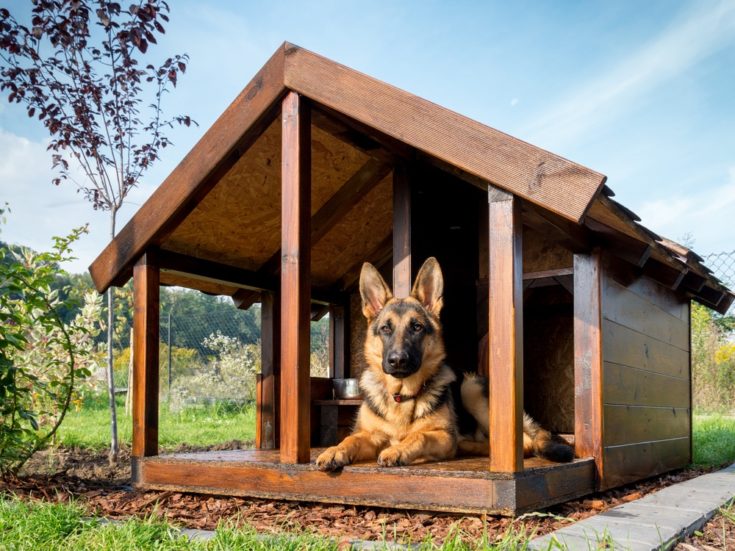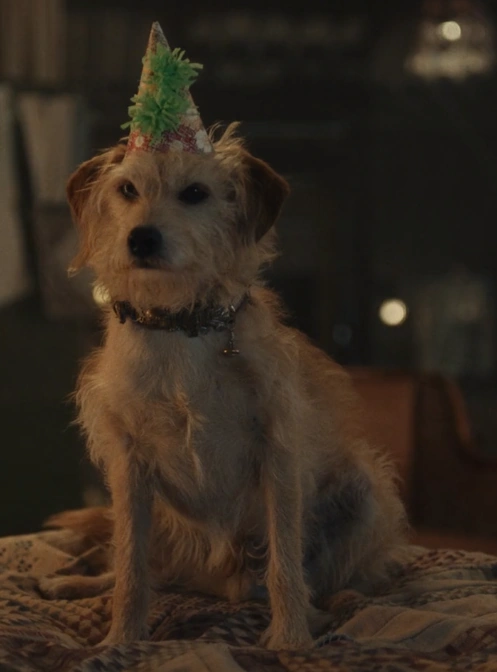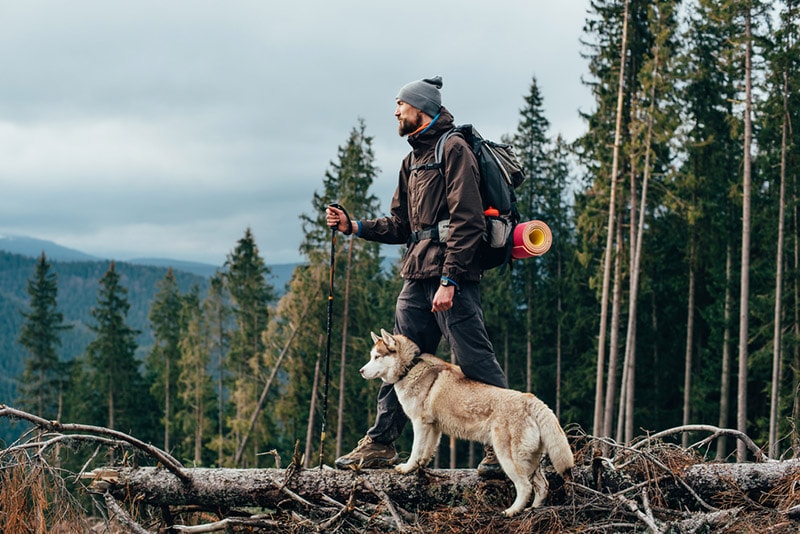Dog Walking Etiquette: 9 Top Tips
By Grant Piper
Updated on
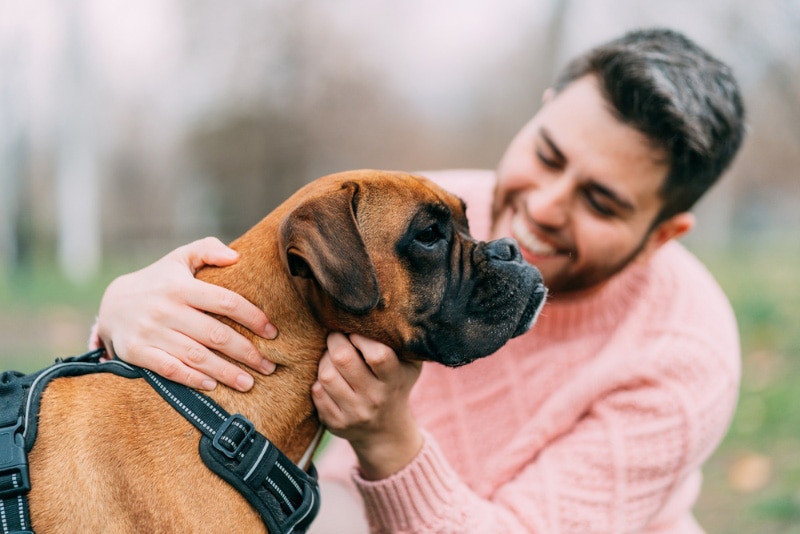
For some people, walking their dogs is a daily routine, sometimes multiple times per day. The best way to ensure that your regular walks go smoothly and that you are a good neighbor and good dog owner is to ensure that you are following all rules and etiquette while walking your dog. There are a number of things that you can do while walking your dog to ensure that your dog stays safe, the neighborhood stays clean, and strangers remain at ease. Poor dog-walking etiquette can make you appear rude, uncaring, or even dangerous to observers. Here are nine tips that you can follow to make you the best dog walker possible.
The 9 Tips of Dog Walking Etiquette
1. Use a Leash
You should always walk your dog on a leash except for under very specific circumstances. If you are in any sort of populated area, including cities, suburbs, local streets, and parks, your dog should be leashed. The only time your dog should be off leash on a walk is if you are hiking in remote areas where encountering other people is unlikely or if you are hunting with your dog. Dogs that are off leash can cause anxiety in other people. They can accidentally get hurt or hurt others. For these reasons, you should always keep your dog leashed while walking them.
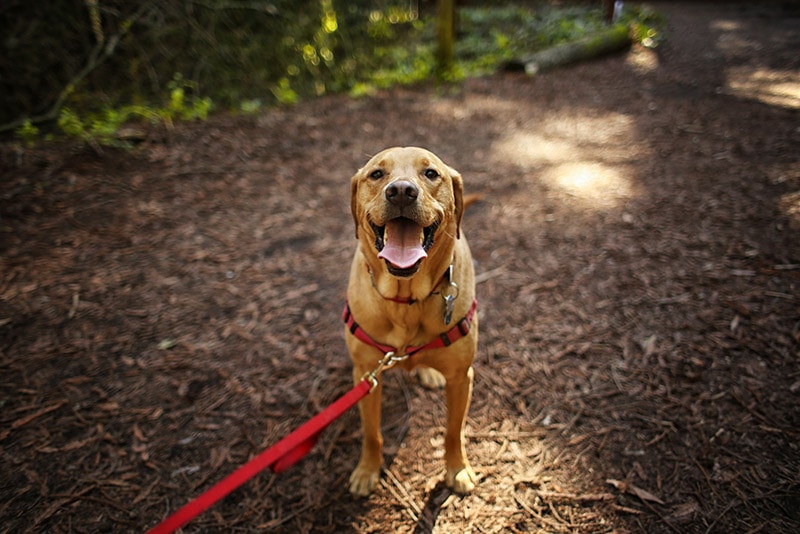
2. Don’t Let Your Dog Lunge or Bound Toward People
Some dogs have the bad habit of pulling at the end of the leash, lunging toward people, or trying to take off at a sprint toward strangers. This is rude behavior. You should not let your dog lunge, pull at the end of the leash toward strangers, or run at people at a high rate of speed. Anyone who sees a dog running at them or lunging at them is going to be concerned. If strangers have their own dogs with them, their dogs can get scared or defensive, leading to a potentially volatile situation.
In order to get your dog to remain calm around others, you should have them sit when other people pass or train them to look at or focus on you instead of other people.
3. Ask Before Letting Your Dog Approach People or Dogs
Many people will ask you before they approach your dog, but you should also ask others if it is okay for your dog to approach them. If your dog wants to greet another dog, you should ask their owner if it is okay to let the dogs greet one another. We already discussed how you should not let your dog lunge at strangers, but you should also not walk right up to people who did not invite you to approach. It is a basic courtesy to ask people if your dog can approach or if they can interact with their dog. If they say no, thank them and move on. Never press the issue.
4. Pick Up Your Dog’s Waste
No one likes stepping in dog poop. Excess waste along trails and in parks can severely dampen the mood and the ambiance. Piles of poop lining the sidewalks are gross. Dog poop can smell, attract flies, and harbor disease. You should always pick up after your dog when you are out on a walk. Bring a waste bag with you and quickly pick up any waste, tie it up, secure it, and then throw it away in a proper receptacle. You don’t want to be the one leaving dog poop all over the place. It is unhealthy, gross, and rude not to pick up after your dog on a walk. Your neighbors will appreciate your attention to cleanliness and etiquette.
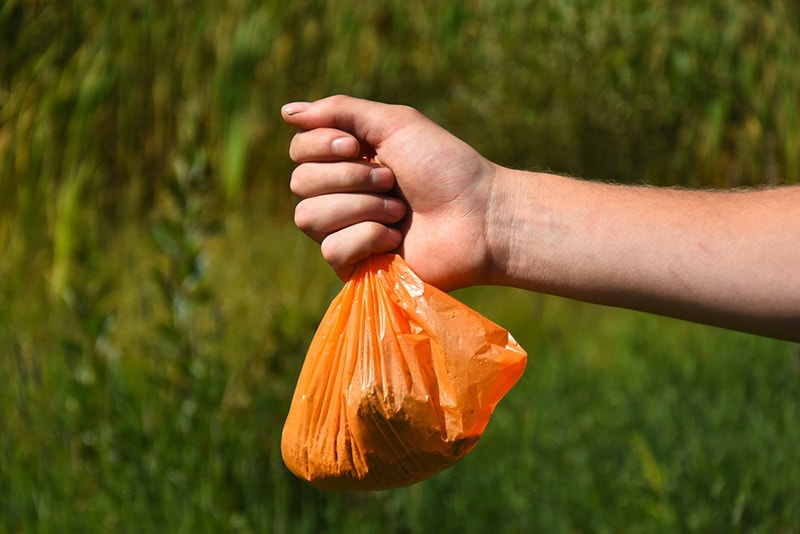
5. Keep Your Dog Off Other People’s Property
One thing that can potentially irritate other people is letting your dog onto their property. Some people get extremely upset if they see dogs traipsing through their yards, especially if they defecate on the lawn and the owner does not pick it up. (See tip #4.)
If you are walking your dog through a neighborhood, make sure you keep your dog confined to public spaces like the sidewalk, street, frontage, and medians. Do not let your dog wander through other people’s property. Don’t let your dog pee on people’s cars, don’t let them dig in someone’s yard, and don’t let them rummage through any garbage. It is just not a good idea to let your dog interact with anyone’s property while on a walk.
6. Keep Your Dog Under Voice Command
Even if you are using a leash, you should still make sure that your dog is under voice command. Make sure your dog has excellent recall, and make sure they are able to stop or stay on command. Sometimes, unexpected things happen on walks. You can drop the leash if your dog yanks suddenly. The clasp can break, or the collar can come loose, leaving your dog free to run off. Even the most experienced dog owners can accidentally drop their dog every once in a while.
That is why it is imperative that your dog is under voice command so that they can stop, stay, and come back when they are told to. This will prevent them from running up on strangers, other dogs, or into traffic. If you ever have your dog off leash on purpose, you should also make sure that your dog is under firm voice command.
7. Watch for Scared or Aggressive Dogs
Your dog might not be scared, anxious, or aggressive on walks, but that is not the case for all dogs. You should look out for dogs that look anxious, scared, or aggressive and give them a wide berth. Some dogs will have strong harnesses or special leads that might tip you off to the fact that they can be hard to control. Dogs that are baring their teeth, growling, have their hackles up, or have their tail between their legs should be avoided in order to prevent your dog from setting them off.
Some dogs are very protective of their owners when they are out in public. Protective dogs will stand in front of their owners, posture, and let you know not to approach. These dogs should also be avoided. That way, you don’t end up in a bad situation by accident.
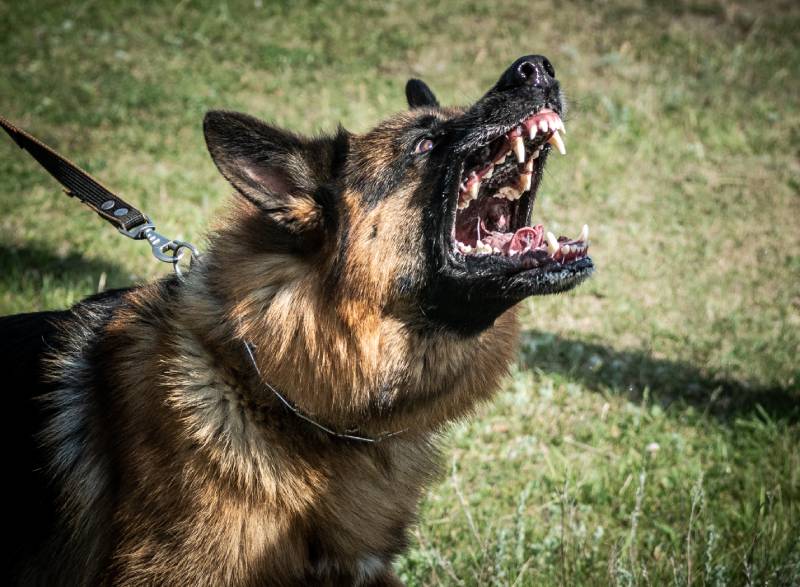
8. Make Yourself the Center of Focus for Your Dog
One way to keep your dog on their best behavior while on walks is to train them to make you the center of attention. Train your dog to look at you, listen to you, and stay close to you when you are on walks. That way, if anything goes wrong or if your dog gets excited, they will look to you for guidance. This will ensure that you have the best chance possible of staying in control and being able to intervene to keep you and your dog safe. It will also help prevent your dog from scaring others or getting into places they shouldn’t.
9. Be Aware of Your Surroundings at All Times
Lastly, be aware of your surroundings at all times. In many cases, bad situations on walks can easily be avoided if the owners are paying attention. If you see a large lawn coming up that your dog likes to try and run onto, move to the other side of the street. If you see other dogs playing or roughhousing, make sure your dog is paying attention to you instead of them. Avoid groups of people. Look out for bikes. Ensure that the leash and collar remain tight and secure.
All of these things will become second nature over time, but not paying attention can get you into trouble. For these reasons, it is advised not to be distracted while walking your dog. Don’t be staring at your phone. Don’t be caught stuck in your own head. Make sure you are present and in the moment. That way, you can keep your dog close and on track no matter what is going on.
Conclusion
These tips will ensure that you and your dog remain safe and secure on every walk you take. Dog walking etiquette is about keeping your dog in line and being aware of your surroundings. No one wants to end up in a bad situation while on a walk. Knowing your dog, keeping your dog on the straight and narrow, and keeping watch for potential problems will ensure that you remain polite and in control at all times. Many common situations that arise on walks, like confrontations with property owners, upset pedestrians, and dog fights, can be avoided by following these nine tips.
Featured Image Credit: Juan_Hernandez, Shutterstock


